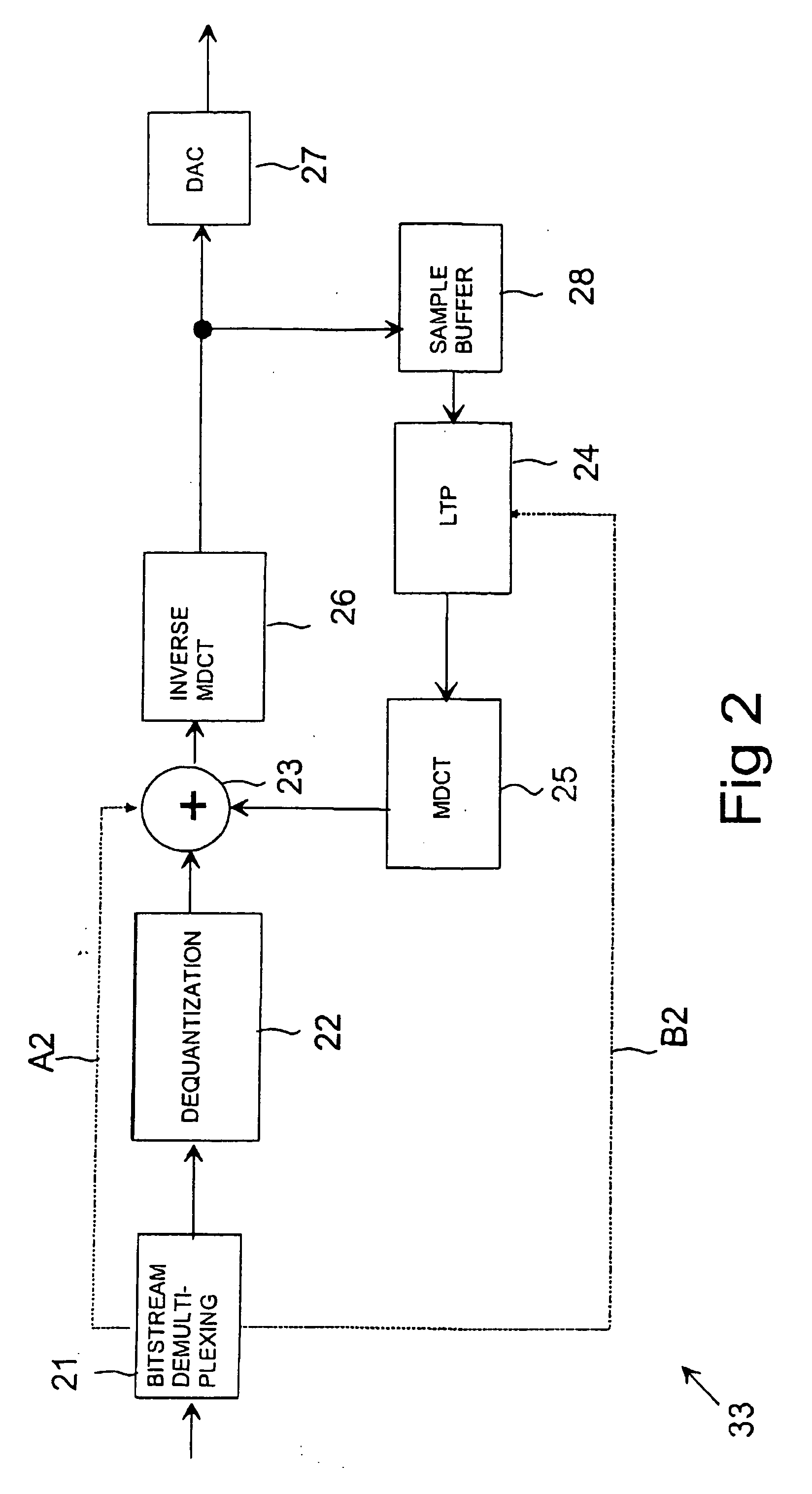Method for improving the coding efficiency of an audio signal
a technology of audio signal and coding efficiency, applied in the direction of code conversion, speech analysis, instruments, etc., can solve the problems of ineffective use of signal, no attention to the relationship between the frequency of the audio signal and its periodicity, and prior art coders, so as to improve the coding accuracy and transmission efficiency of audio signals, the effect of greater accuracy
- Summary
- Abstract
- Description
- Claims
- Application Information
AI Technical Summary
Benefits of technology
Problems solved by technology
Method used
Image
Examples
first embodiment
[0030] According to the invention, the pitch predictor order with which the smallest coding error is attained is selected to code the audio signal (block 412). If the coding efficiency measure for the selected pitch predictor is greater than 1, the information relating to the predicted signal is selected for transmission. If the coding efficiency measure is not greater than 1, the information to be transmitted is formed on the basis of the original audio signal. According to this embodiment of the invention, emphasis is placed on minimising the prediction error (qualitative maximization).
[0031] According to a second advantageous embodiment of the invention, a coding efficiency measure is calculated for each pitch predictor order. The pitch predictor order that provides the smallest coding error, selected from those orders for which the coding efficiency measure is greater than 1, is then used to code the audio signal. If none of the pitch predictor orders provides a prediction gain ...
third embodiment
[0032] According to the invention, a coding efficiency measure is calculated for each pitch predictor order and the pitch predictor order that provides the highest coding efficiency, selected from those orders for which the coding efficiency measure is greater than 1, is selected to code the audio signal. If none of the pitch predictor orders provides a prediction gain (i.e. no coding efficiency measure is greater than 1) then advantageously, the information to be transmitted is formed on the basis of the original audio signal. Thus, this embodiment of the invention places emphasis on the maximisation of coding efficiency (quantitative minimization).
fourth embodiment
[0033] According to the invention, a coding efficiency measure is calculated for each pitch predictor order and the pitch order that provides the highest coding efficiency is selected to code the audio signal, even if the coding efficiency is not greater than 1.
[0034] Calculation of the coding error and selection of the pitch predictor order is conducted at intervals, preferably separately for each frame, wherein in different frames it is possible to use the pitch predictor order which best corresponds to the properties of the audio signal at a given time.
[0035] As explained above, if the coding efficiency determined in block 12 is not greater than one, this indicates that it is advantageous to transmit the frequency spectrum of the original signal, wherein a bit string 501 to be transmitted to the data transmission channel is formed advantageously in the following way (block 415). Information from the calculation block 12 relating to the selected transmission alternative is transf...
PUM
 Login to View More
Login to View More Abstract
Description
Claims
Application Information
 Login to View More
Login to View More - R&D
- Intellectual Property
- Life Sciences
- Materials
- Tech Scout
- Unparalleled Data Quality
- Higher Quality Content
- 60% Fewer Hallucinations
Browse by: Latest US Patents, China's latest patents, Technical Efficacy Thesaurus, Application Domain, Technology Topic, Popular Technical Reports.
© 2025 PatSnap. All rights reserved.Legal|Privacy policy|Modern Slavery Act Transparency Statement|Sitemap|About US| Contact US: help@patsnap.com



